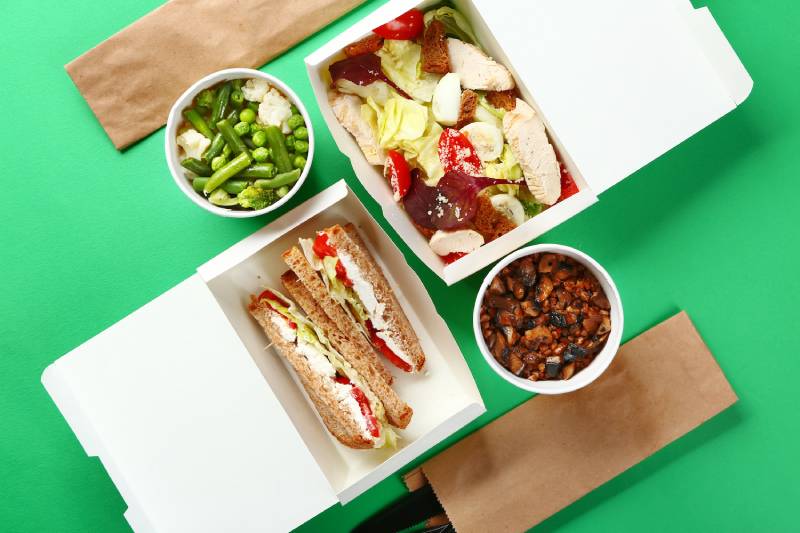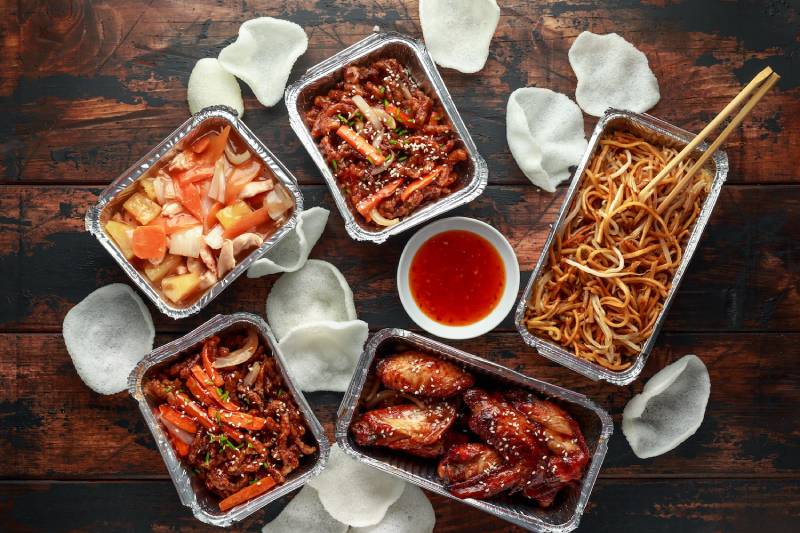If you’re a fan of takeaway food, you’ll know that there are all sorts of different options to choose from. From Indian curries to Chinese stir-fries, the possibilities are endless. But have you ever stopped to think about where takeaway food packaging comes from? In this blog post, we’ll take a look at the history of takeaway food packaging and explore some of the different types that you can try. So read on to learn more!
Where did Takeaway’s Come From?
The first recorded instance of takeaway packaging was in ancient Rome, where vendors would wrap flatbreads in paper or leaves before selling them to customers. This practice eventually spread to other countries, with different cultures using different materials for their takeaway packaging. For example, in Japan, sushi is often wrapped in bamboo leaves, while in India, curries are commonly served in banana leaves.
Takeaway food was first introduced in the United Kingdom in the early 1800s. The first recorded instance of takeout food being sold was by a man named Joseph Malin, who opened a shop in London selling fish and chips. It’s gradually grown from there and become ever increasingly popular as the dynamics of the household have changed. With people having access to more disposable income and woman working outside of the home, takeaways have become a weekend staple in many homes across the country.
What Materials are Used for Takeaway Packaging?

Over the years, a variety of different materials have been used for takeaway packaging, including plastic, foam, and cardboard. However, one material that has proven to be particularly popular is aluminium foil. This is because it’s lightweight, durable, and easy to recycle. In fact, many recycling centres will accept aluminium foil as part of their regular collection programme.
If you’re looking for something a little more eco-friendly than aluminium foil, then consider using biodegradable packaging instead. This type of packaging is made from natural materials such as cornstarch or bamboo fibre, which means that it can be decomposed by microorganisms in soil or water. So if you’re looking to reduce your environmental impact, then biodegradable packaging is a great option.
There are of course, many instances where more traditional materials are used. There are benefits in this, keeping food fresher for longer can help reduce waste. Using lighter packaging such as plastic cuts down on fuel and reduces the carbon footprint of manufacturers.
For food outlets, there is also a cost element that cannot be forgotten here. Where price is important, sometimes a cheaper takeaway packaging option is the only way for a business to survive, pay it’s staff and contribute to the local economy. So don’t be too hard on businesses if you see them still using plastic containers. Instead, make sure you recycle or reuse your packaging wherever possible.
Different Types of Packaging for Takeaway Food
The first type of takeaway food packaging that we’ll look at is the paper bag. Paper bags have been around for centuries and were originally used to transport goods like flour and sugar. They became popular for carrying food in the 19th century, when street vendors started using them to sell hot snacks like chestnuts and pretzels. Today, paper bags are still widely used for takeaway food, especially for items like chips and sandwiches.
Another type of popular takeaway food packaging is the cardboard box. Cardboard boxes were first introduced in the early 20th century and quickly became a staple of the takeout industry. They’re perfect for holding large quantities of food, making them ideal for feeding a group of friends or family.
Another kind that you no longer see is the use of newspapers for chip packets. This was popular in the 1960s and 1970s as it was a cheap way to package food. However, it fell out of favour due to health concerns about the ink from the newspapers leaching into the food.

Coffee cups are also a type of takeaway packaging that have been around for many years. The first disposable coffee cups were introduced in the early 20th century and were made out of paper. Today, most coffee cups are made out of plastic or styrofoam, although there is an increasing trend towards using biodegradable materials like bamboo or cornstarch.
Sustainable and Eco Friendly Takeaway Food Packaging
Takeaway packaging has come a long way since its humble beginnings and is now a vital part of the food industry. With the help of advances in technology, we have been able to create more durable and sustainable packaging solutions that are better for the environment.
Nowadays, there is a much greater focus on using sustainable and eco-friendly materials for takeaway food packaging. This is because people are becoming more aware of the importance of protecting our environment. Some of the most popular sustainable materials used for takeaway food packaging include biodegradable plastics, recycled paper, and bamboo.
Biodegradable plastics are made from renewable resources such as corn starch or sugar cane. They can be composted or incinerated without releasing any harmful toxins into the environment. Recycled paper is made from old newspapers, magazines, or other waste paper products. It can be recycled up to seven times, making it a much more environmentally friendly option than virgin paper. Bamboo is a fast-growing plant that requires very little water to grow. It is also naturally antibacterial, making it a safe choice for food packaging.
Choosing sustainable and eco-friendly takeaway food packaging is not only good for the environment, but it can also be good for your business. Consumers are increasingly looking for businesses that care about sustainability, and using environmentally friendly materials can help you to stand out from the competition. So why not make the switch to sustainable takeaway food packaging today?
How to Reuse your old Takeaway Food Containers
If you’re anything like me, you probably already have a few takeaway food containers sitting in your cupboard. And if you’re looking for ways to be more eco-friendly, you might be wondering if there’s a way to reuse them.
Here are a few ideas:
– Use them as storage containers for leftovers or snacks.
– Use them to pack a lunch for work or school.
– Give them to your kids to use as toys (they’ll love pretending to be their favourite restaurant).
– Use them as planters for small plants or herbs.
If you can’t reuse then the next best option is recycling. Most areas have local recycling schemes. Be sure to clean any food from the takeaway packaging before putting it into your recycling bins, any contamination could mean that it doesn’t get recycled at all
At Takeaway Supplies, we offer a wide range of takeaway packaging, from soup bowls to meal containers through to coffee cups and lids. We also offer more environmentally friendly options across our range and are constantly looking for additional sustainable options to offer to our UK customers.
